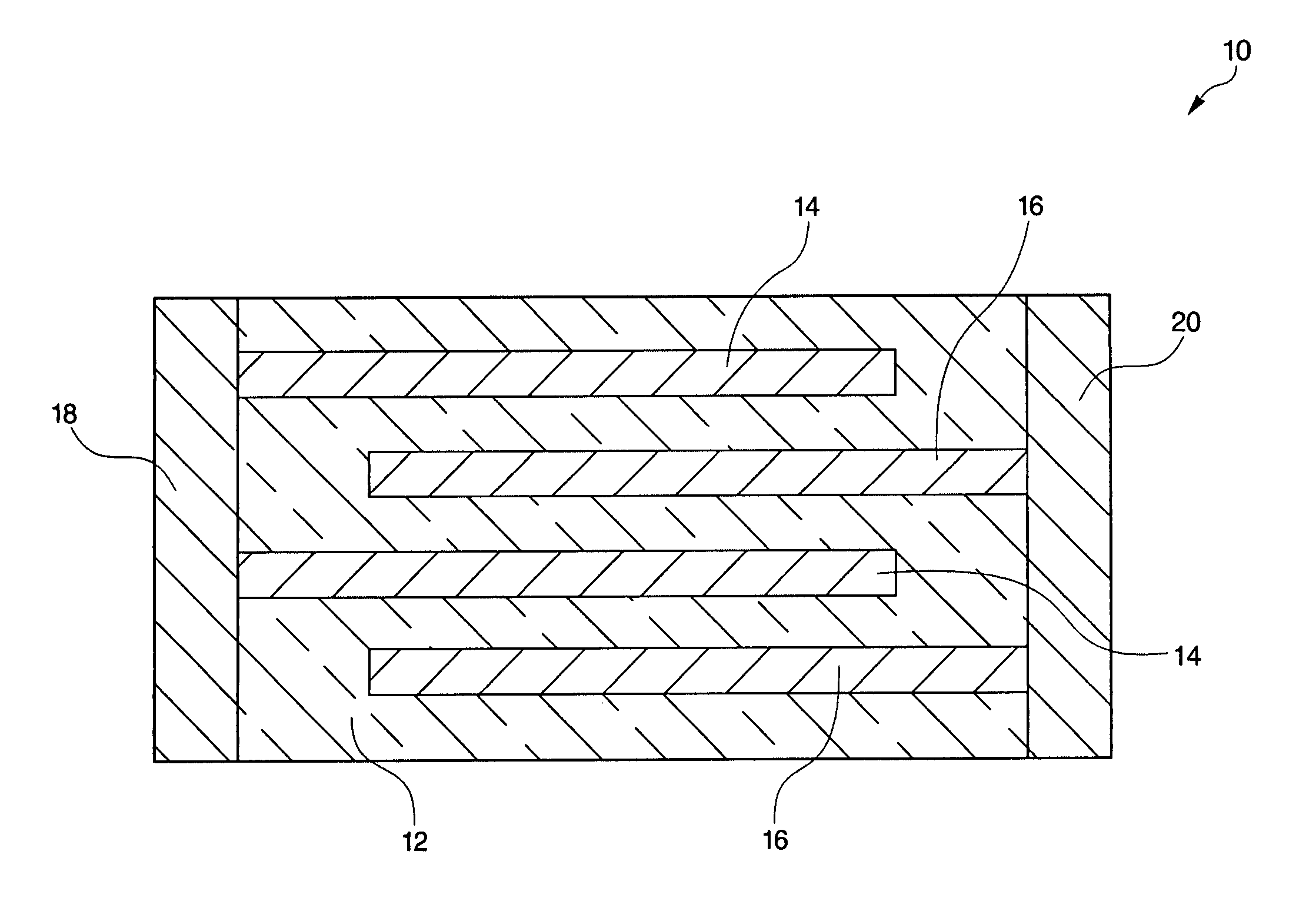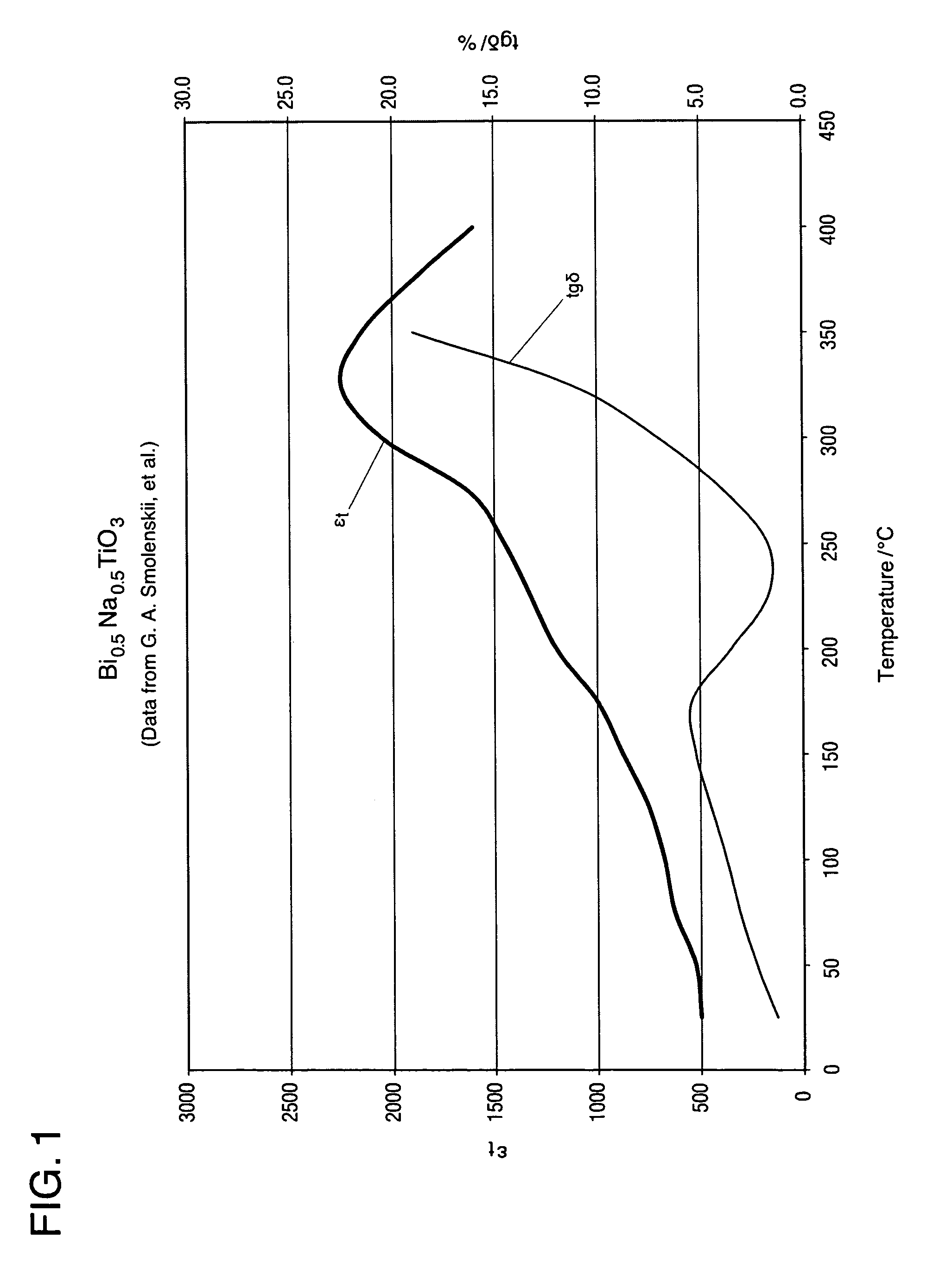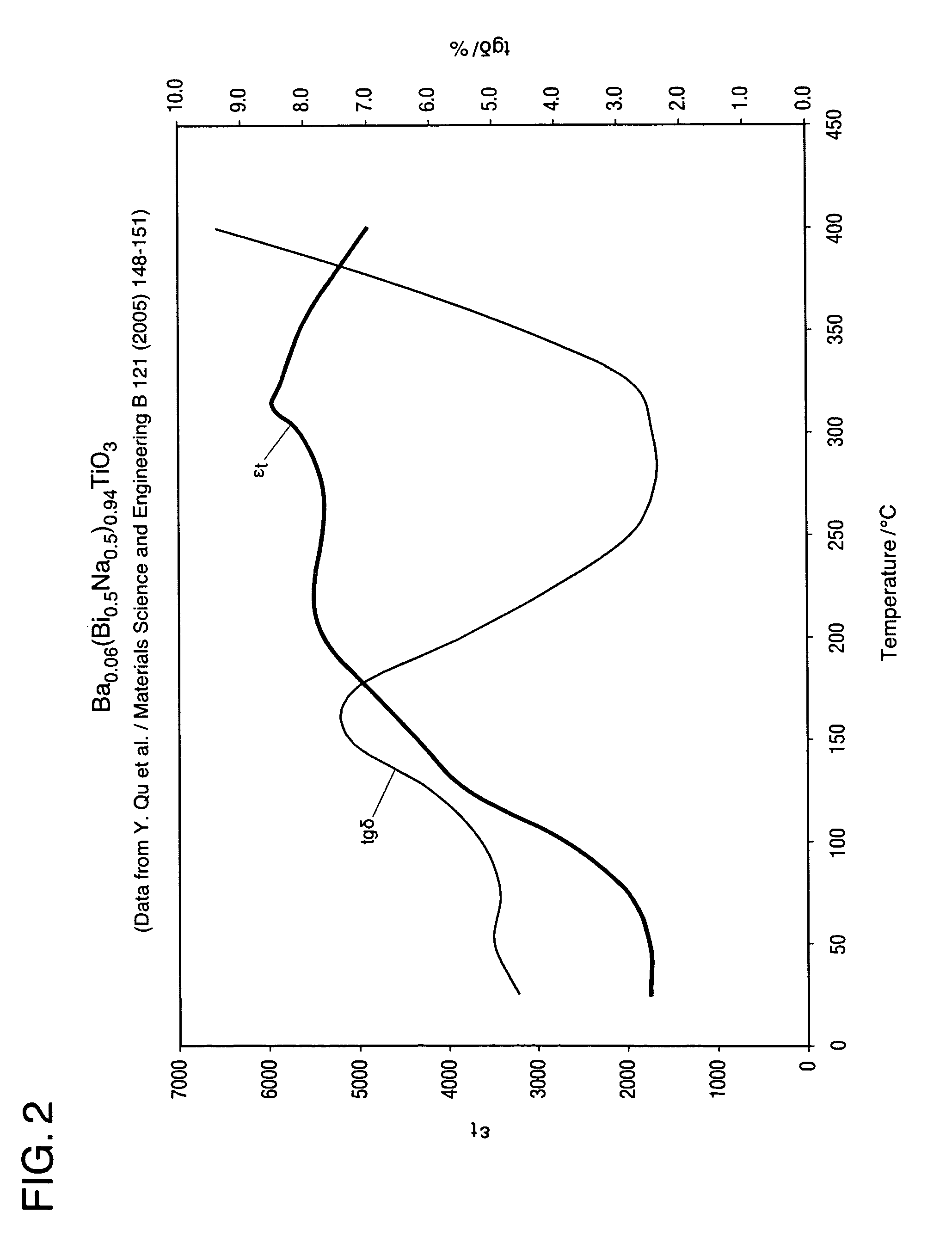High temperature ceramic dielectric composition and capacitors made from the composition
a ceramic dielectric and composition technology, applied in the field of dielectric compositions, can solve the problems of poor temperature stability of dielectric constant, severely limit the obtainable capacitance of these devices, and conventional batiosub>3/sub>based dielectrics lose the most of their dielectric constant at the required high operating temperature, and achieve excellent dielectric constant/voltage characteristics, high desirable properties
- Summary
- Abstract
- Description
- Claims
- Application Information
AI Technical Summary
Benefits of technology
Problems solved by technology
Method used
Image
Examples
Embodiment Construction
[0025]The preferred embodiments of high temperature ceramic dielectric compositions of the present invention resulted from extensive experimentation that will be described herein. The preferred compositions were developed by testing the samples described below in the form of both experimental monolayer structures and multilayer ceramic capacitor (“MLCC”) structures, as shown in the tables below.
[0026]A bismuth sodium titanate (Bi0.5Na0.5TiO3) base material is modified by the partial substitution of aliovalent A-site cations such as barium (as BaO) or strontium (as SrO), as well as certain b-site donor / acceptor dopants and sintering aids to form what is believed to be a multi-phase system, much like current “core / shell” X7R dielectrics based solely on BaTiO3. The Mex(Bi0.5Na0.5)1-xTiO3 solid-solution material of the present invention was first prepared by standard ceramic processing techniques using two different sets of precursor materials. The actual solid-solution formulation empl...
PUM
| Property | Measurement | Unit |
|---|---|---|
| dielectric constant | aaaaa | aaaaa |
| dielectric constant | aaaaa | aaaaa |
| thicknesses | aaaaa | aaaaa |
Abstract
Description
Claims
Application Information
 Login to View More
Login to View More - R&D
- Intellectual Property
- Life Sciences
- Materials
- Tech Scout
- Unparalleled Data Quality
- Higher Quality Content
- 60% Fewer Hallucinations
Browse by: Latest US Patents, China's latest patents, Technical Efficacy Thesaurus, Application Domain, Technology Topic, Popular Technical Reports.
© 2025 PatSnap. All rights reserved.Legal|Privacy policy|Modern Slavery Act Transparency Statement|Sitemap|About US| Contact US: help@patsnap.com



